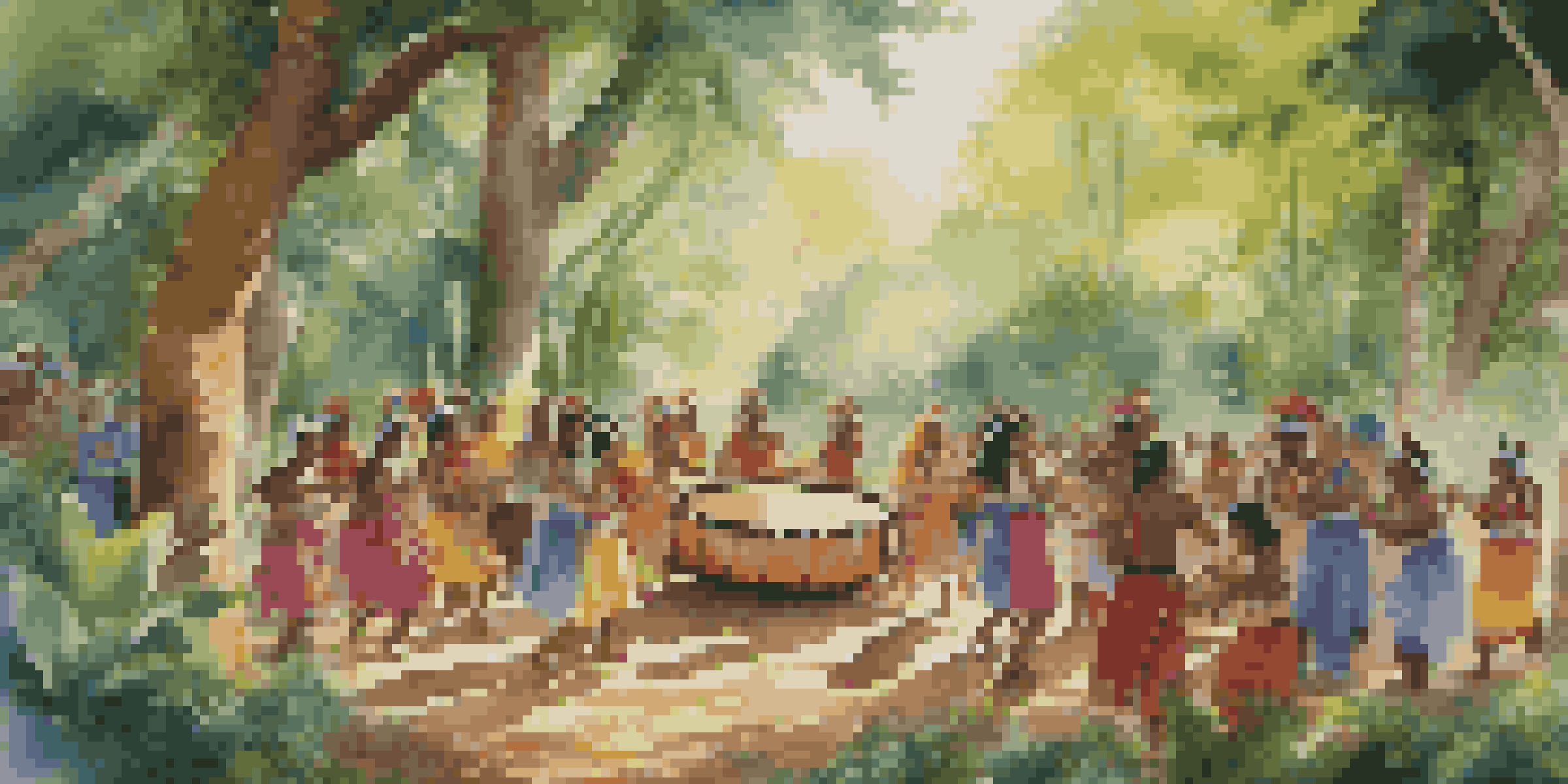Traditional Indigenous Music: Preserving Heritage Through Sound

Understanding Traditional Indigenous Music and Its Roots
Traditional Indigenous music is a vibrant expression of culture, history, and community. It encompasses a variety of styles and instruments, often passed down through generations. This music serves as a storytelling medium, sharing the values, beliefs, and experiences of Indigenous peoples. By understanding these roots, we can appreciate the profound connection between music and identity in Indigenous cultures.
The Role of Music in Indigenous Communities
In Indigenous communities, music plays a crucial role in social gatherings, ceremonies, and rituals. It is not just entertainment; it's a means of communication and a way to connect with ancestors and the natural world. Traditional songs often reflect the community's relationship with nature, embodying teachings and wisdom through melodic narratives. This communal aspect of music fosters a sense of belonging and solidarity among members.
Music as Cultural Expression
Traditional Indigenous music is a vital expression of culture, history, and community, serving as a storytelling medium that connects to identity.
Instruments That Tell Stories
Indigenous music features a diverse array of instruments, each with its own significance and history. Instruments like drums, flutes, and rattles are often handcrafted, reflecting the unique artistry of different cultures. For instance, the drum is not only a musical instrument but also symbolizes the heartbeat of the Earth. Each instrument tells a story, connecting the musician to their heritage and the wider community.
Preserving Traditional Music Amid Modern Influences
As modern influences permeate Indigenous communities, preserving traditional music becomes increasingly important. Contemporary artists are blending traditional sounds with modern genres, creating a fusion that respects heritage while appealing to new audiences. This evolution ensures that traditional music remains relevant and accessible, fostering a renewed interest among younger generations. Balancing tradition with innovation is key to preserving this vital aspect of culture.
Preservation Through Innovation
Modern artists are blending traditional Indigenous music with contemporary genres, ensuring its relevance and accessibility for younger generations.
Music as a Tool for Cultural Education
Traditional Indigenous music serves as an educational tool, teaching values and cultural practices to both Indigenous and non-Indigenous audiences. Workshops, performances, and educational programs often incorporate music to share stories and teachings. By engaging with this musical heritage, listeners can gain insights into the rich histories and traditions of Indigenous peoples. This understanding fosters respect and appreciation for cultural diversity.
The Impact of Technology on Indigenous Music
In today's digital age, technology plays a significant role in the preservation and promotion of Indigenous music. Platforms like social media and streaming services allow artists to reach wider audiences, breaking geographical barriers. Additionally, recording technology enables the documentation of traditional music, ensuring it is not lost to time. While technology presents challenges, it also offers opportunities for revitalization and recognition of Indigenous soundscapes.
Empowerment and Education
Engaging with traditional music empowers Indigenous communities and serves as an educational tool that fosters respect for cultural diversity.
Community Empowerment Through Music
Engaging with traditional music empowers Indigenous communities by validating their cultural identity. Music projects often involve collaboration, fostering leadership and skills within the community. Through performances and collaborations, Indigenous artists can reclaim their narratives and share them with the world. This empowerment is crucial for cultural resilience and for inspiring pride among younger generations.
Looking Ahead: The Future of Traditional Indigenous Music
The future of traditional Indigenous music lies in the hands of a new generation of artists. As they navigate the balance between tradition and modernity, their creativity will shape the evolution of this musical heritage. By embracing innovation while honoring their roots, these artists will ensure that traditional Indigenous music continues to thrive. Ultimately, the resilience of this art form reflects the enduring spirit of Indigenous cultures.